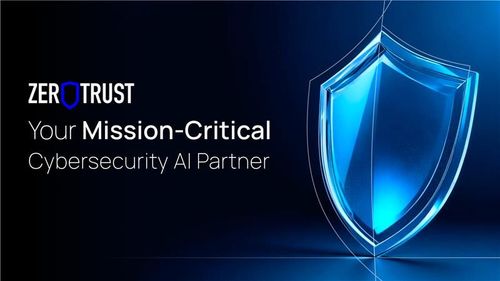Financial crimes are becoming more sophisticated as digital transactions grow in volume and speed. Enterprises now face the challenge of keeping their operations secure and compliant amid an increasingly complex financial environment.
Anti-Money Laundering is no longer just about meeting regulations, it’s about protecting business integrity and ensuring every transaction reflects trust. Traditional AML frameworks often struggle to detect modern laundering tactics effectively. Enterprises need smarter systems that can adapt, learn, and deliver accurate insights to stay ahead of financial threats.
The following sections will explore how intelligent AML solutions transform compliance into a strategic defense, helping enterprises strengthen financial integrity in a rapidly changing world.
Understanding Anti-Money Laundering and Its Growing Role in Financial Integrity
Anti-Money Laundering (AML) refers to a set of regulations, processes, and technologies designed to detect and prevent the movement of illegally obtained funds through legitimate financial systems.
It serves as a safeguard that protects the economy and the reputation of organizations operating within it. For enterprises, implementing AML measures means ensuring transparency, accountability, and compliance across every financial transaction.
Money laundering schemes have evolved far beyond traditional banking activities. Criminals now exploit multiple channels to disguise illicit funds, including:
- E-commerce and digital marketplaces – using high transaction volumes to mask illegal activity.
- Fintech platforms and digital wallets – enabling anonymous transfers across borders.
- Cross-border payments – leveraging international networks to obscure fund origins.
This complexity has made AML a strategic priority for banks and all enterprises managing financial flows, customer data, and digital ecosystems.
Modern Anti-Money Laundering frameworks help businesses do more than meet regulatory obligations. They strengthen trust with stakeholders, enhance governance, and maintain financial integrity across global operations. As enterprises expand digitally, AML becomes an essential defense layer that upholds compliance and credibility in the eyes of regulators and partners alike.
Why Traditional AML Frameworks are No Longer Enough
The pressure to maintain compliance has never been greater. Enterprises face an evolving web of global regulations, cross-border data requirements, and constantly changing financial crime tactics.
While the purpose of Anti-Money Laundering remains clear: "to protect the financial system", many organizations still rely on outdated, rule-based frameworks that can no longer keep pace with the digital economy.
Traditional AML systems often struggle with several key challenges:
- Rigid detection rules
Static, pre-defined rules fail to capture new or sophisticated laundering patterns. - High false positives
Manual investigations consume time and resources, reducing operational efficiency. - Limited scalability
Legacy systems cannot handle the growing volume and complexity of transactions. - Fragmented data
Disconnected systems make gaining a unified view of customer or transaction risk challenging. - Costly compliance operations
Increasing regulatory expectations demand more personnel, technology, and reporting capacity.
These limitations create a heavy compliance burden for enterprises. Instead of focusing on strategic risk management, many compliance teams spend most of their time processing alerts and managing regulatory paperwork.
As a result, organizations risk slower response times, inconsistent reporting, and potential exposure to financial penalties or reputational harm.
To address these challenges, enterprises are beginning to look beyond compliance checklists. They seek adaptive Anti-Money Laundering strategies prioritizing risk awareness, data integration, and more intelligent decision-making, turning compliance into a more agile and sustainable process.
Intelligent Anti-Money Laundering: Reinventing Compliance through Smarter Systems
Enterprises are realizing that the future of compliance depends on intelligence: "Systems that can learn, adapt, and respond to complex financial behaviors in real time." Intelligent AML solutions move beyond static rules, combining automation, analytics, and contextual awareness to identify risks more accurately and efficiently.
Unlike traditional frameworks, Intelligent Anti-Money Laundering Systems are designed to:
- Analyze behavior patterns
Detect anomalies across large transaction datasets, revealing hidden laundering activities. - Correlate data sources
Integrate information from banks, digital platforms, and third-party services for a complete view of financial networks. - Prioritize risk intelligently
Focus on high-impact alerts instead of overwhelming teams with false positives. - Adapt continuously
Learn from new data and regulatory changes to stay effective over time. - Streamline reporting
Automate compliance documentation to meet global standards quickly and consistently.
For enterprises, the shift to intelligent AML is a strategic transformation, not just a technology upgrade. It enables organizations to:
- Strengthen their defense against evolving financial crimes.
- Improve operational efficiency by reducing manual workload.
- Gain deeper insights into customer and transaction behavior.
- Build long-term compliance resilience and stakeholder confidence.
By reinventing compliance through smarter systems, enterprises can turn AML from a regulatory burden into a core financial integrity and trust driver.
Cybersecurity Automation as the Foundation of Modern AML
Modern Anti-Money Laundering systems are only as strong as the cybersecurity infrastructure behind them. In a world where financial data moves instantly across digital platforms, securing every transaction, device, and access point becomes a critical layer of defense.
This is where Cybersecurity Automation plays a transformative role: "Empowering AML frameworks to operate with speed, precision, and trust."
Instead of relying on manual monitoring, cybersecurity automation enables continuous protection across the entire digital ecosystem. It strengthens AML efforts by:
- Detecting anomalies in real time
- Ensuring data integrity
- Streamlining incident response
- Integrating with AML analytics
- Maintaining regulatory readiness
The synergy between cybersecurity and AML creates a robust ecosystem where prevention, detection, and response work seamlessly together. For enterprises, this means less vulnerability to fraud, lower compliance costs, and higher operational resilience.
By embedding cybersecurity automation at the heart of AML strategies, organizations can protect their financial integrity and digital infrastructure, ensuring that every transaction is secure, compliant, and trustworthy.
Questions about the Anti-Money Laundering Solutions
- What is Anti-Money Laundering (AML) and why is it important for enterprises?
AML refers to a framework of regulations, technologies, and processes that prevent criminals from disguising illicit funds as legitimate income. For enterprises, AML is essential to protecting financial integrity, complying with global regulations, and maintaining trust with stakeholders and regulators. - What role does cybersecurity play in Anti-Money Laundering?
Cybersecurity ensures that AML systems operate on secure, verified, and tamper-proof data. Automation strengthens every layer of defense, from access control and data protection to real-time anomaly detection, creating a unified ecosystem that prevents both cyber and financial crimes. - Is Anti-Money Laundering only relevant to banks and financial institutions?
Not anymore. As digital payments and financial transactions expand across industries, sectors such as e-commerce, telecommunications, fintech, and even large corporations must implement AML measures to protect their digital ecosystems from abuse. - How can enterprises implement AML solutions effectively with SALT’s cybersecurity ecosystem (ZeroTrust)?
By leveraging our integrated cybersecurity ecosystem, enterprises can deploy AML solutions that combine automation, analytics, and regulatory compliance into one secure framework. This approach enhances financial oversight and maximizes Return on Technology Investment (R.O.T.I.) through smarter, more efficient compliance operations.
Building Financial Integrity Starts Now
Enterprises are at a turning point where compliance is a strategic advantage. Intelligent, automated AML systems backed by strong cybersecurity frameworks are helping businesses protect their operations, reduce risk, and strengthen trust across global transactions.
Here’s what embracing modern AML means for enterprises:
- Operational confidence: knowing every transaction is monitored and secured.
- Stronger compliance posture: meeting global standards with ease and precision.
- Data-driven resilience: using real-time insights to detect and prevent emerging threats.
- Long-term trust: building a reputation for integrity in the digital economy.
Financial integrity doesn’t happen by chance because it’s built through technology that evolves with your business.
Partner with us to discover how our cybersecurity automation empowers enterprises to implement more innovative AML solutions and protect what matters most: your trust, your data, and your business.





